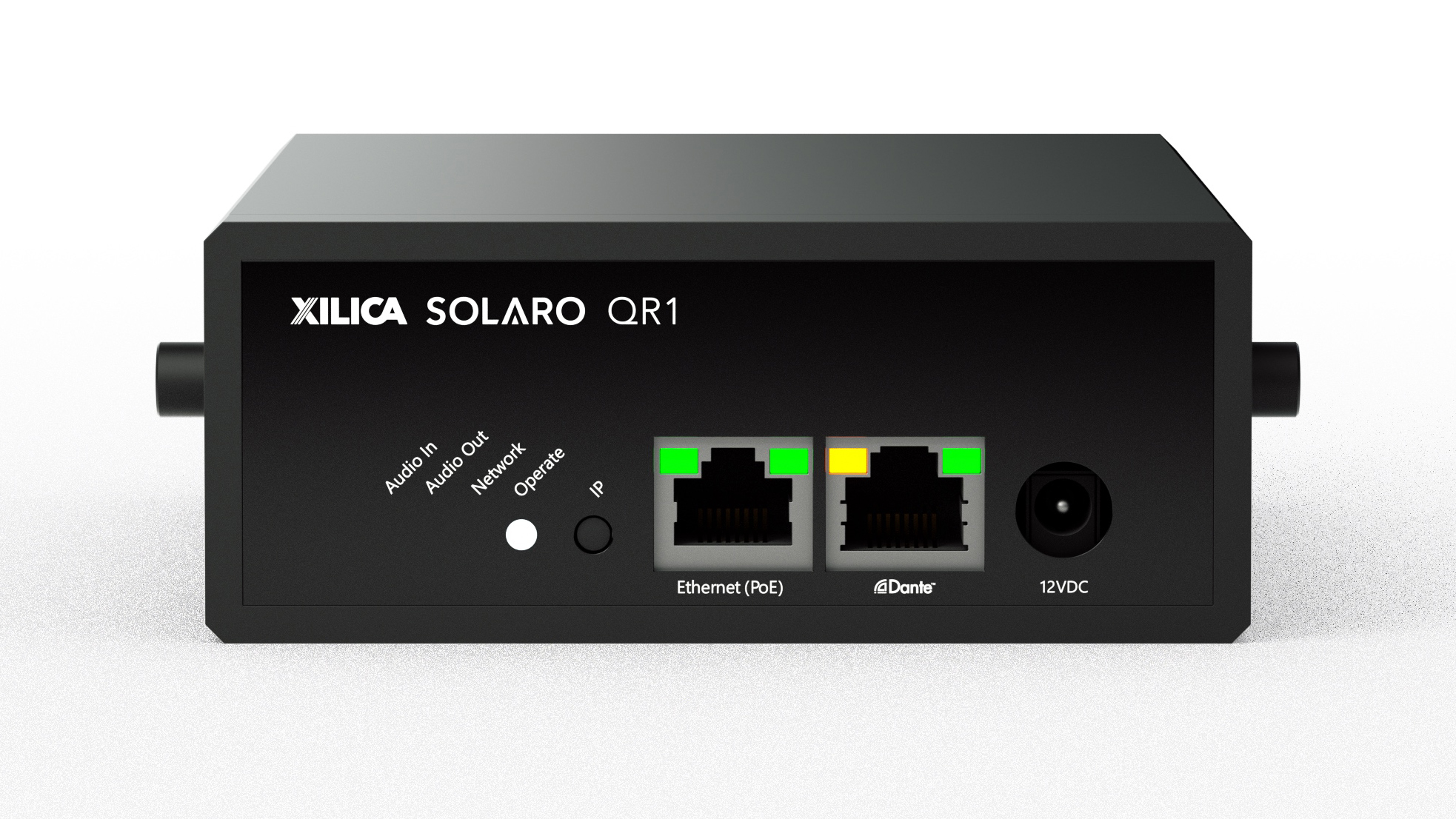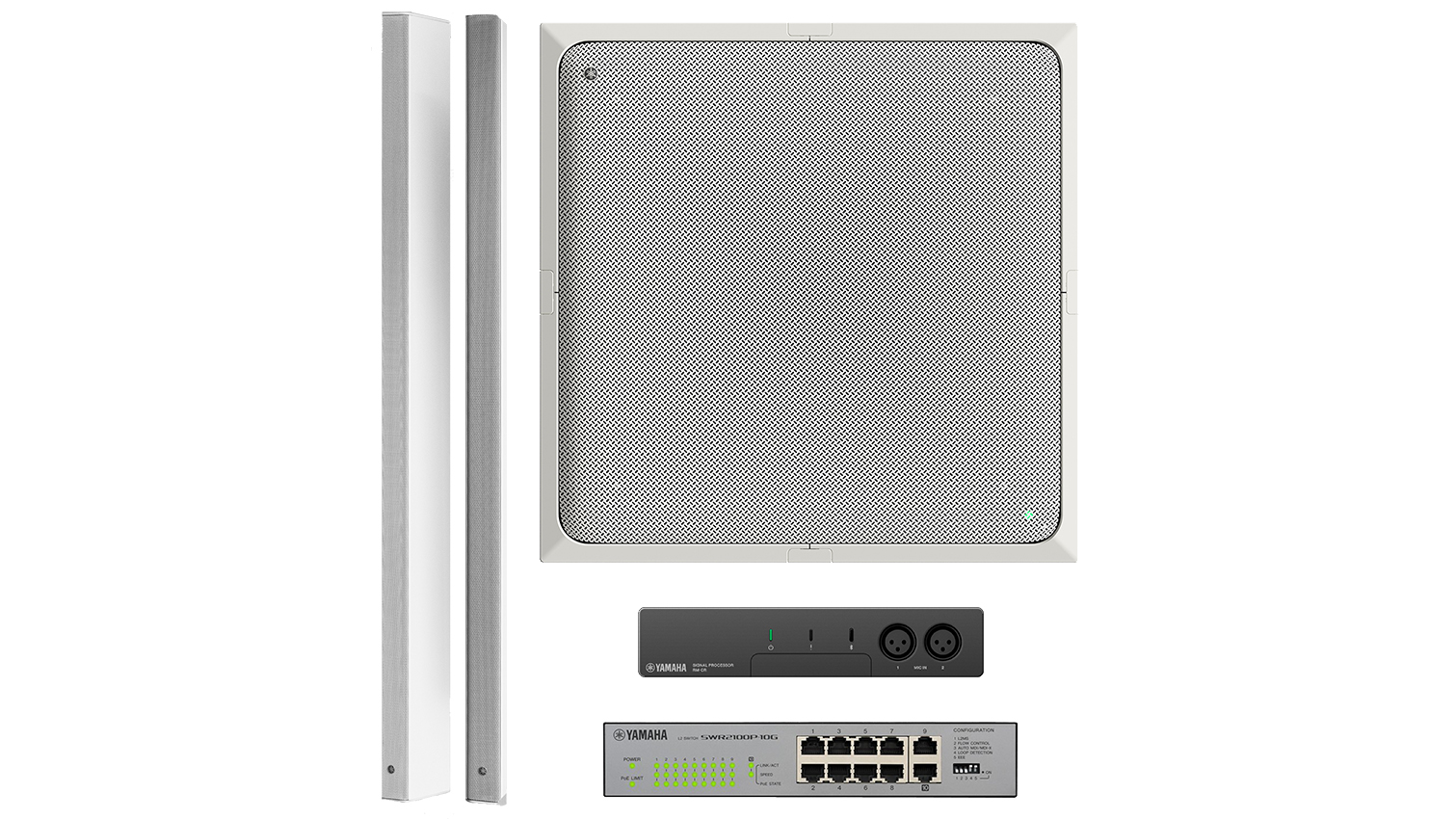Professors strive to engage and inspire students, but sound intelligibility isn’t usually their top priority. Ensuring audio quality is the domain of campus AV specialists, and that task is evolving.
Technology is, by nature, a moving target, but the rapid shift to remote learning in 2020 required many AV stakeholders to rethink classroom audio. The focus has moved to meeting the critical audio needs of teachers and learners on site, in HyFlex (hybrid-flexible) setups, and helping Zoomers hear clearly. New sensibilities and new solutions are needed as virtual learning modalities become commonplace.
Amplify Every Voice
Physical classrooms and online channels present various acoustic challenges, from reflective surfaces to spotty Wi-Fi. To guarantee intelligibility for all students, even those in the virtual back row, tech teams hope to provide consistent audio reinforcement. Audio signals from—and to—remote learners must be pristine to foster a sense of class cohesion.
“You want every student at home to feel like they’re connected, and a lot of that has to do with audio clarity and intelligibility,” said David Missall, technical application engineer manager at Sennheiser.
To track a teacher as they move through a space, or where there is a mix of on-site and mobile participants, a stable system is needed with proper microphone pickup and adaptive echo cancellation that can handle multiple speakers and changing dynamics in a room.
[ Why 2021 Will Be the Year of Touchless Audio ]

Touchless Audio and Beamforming
Ceiling array technologies have been growing in popularity for years, but the pandemic inspired many to take a closer look at smarter arrays and automatic beamforming systems. When installed in ceiling tiles, these audio applications, some equipped with artificial intelligence (AI), provide design flexibility. A touchless system—such as Sennheiser’s TeamConnect Ceiling 2, which features Sennheiser’s patented beamforming technology—also frees the teacher because they “don’t have to always hold a microphone to be heard clearly,” said Missall. “Participants in the classroom can hear interactions from students, wherever they are, in the room and off site.”
Array technology has been a boon for delivering better audio in classrooms by, paradoxically, becoming invisible. Students and teachers can simply “forget about the microphone, because you don’t have to touch it,” Missall said. “You don’t have to worry about turning it on or finding the right levels. You don’t have to think about it. You just talk normally, and wherever you are in the room, you will get picked up.”
Microformat DSPs
Some audio specialists cite new demands for audio digital signal processing (DSP) in classrooms. “As universities continue to rapidly deploy technology into small- and medium-sized classrooms to support UC applications such as Zoom and Microsoft Teams, AV technology managers are looking for audio solutions that are cost-effective, simple to install, and do not take up a lot of space,” said Shaun Robinson, vice president of product management with Xilica.
To integrate everything together, including analog or networked microphones and speakers, along with echo cancellation and other features that improve audio clarity for the remote student, DSPs are seeing significant growth in the education market vertical.
[ Installing AVoIP Systems Today Affords Future Expansion Possibilities ]

Xilica manufactures networked digital signal processors for live and installed sound. The education sector, generally perceived to be a budget-conscious market, is even more financially prudent during COVID. Robinson is excited about solutions that innovate while also adding value. “We have seen strong growth this past year for our Solaro QR1, a microformat DSP that is very cost-effective and yet quite powerful,” he said. “Unlike a DSP that takes up a full rack space, it has a compact form factor, and yet it’s also modular, so you only pay for [the features] you need.” With a compact chassis that fits in a quarter rack unit, the QR1 features a dual core, 40-bit floating point DSP engine, networked audio, and acoustic echo cancellation capabilities that can support an entire classroom.
Indeed, an uplift for Xilica in 2020 was in university spaces, where the “Solaro QR1 was even installed in ceiling tiles to reach out to analog ceiling microphones, and enable UC platform integration as a simple retrofit in traditional classrooms,” Robinson stated.
DSP with Camera Control
To enhance interactivity for remote students, there is a push to add PTZ and smarter camera control within the DSP to show each person speaking. Missall noted, “We’re seeing multiple cameras in the same room, with wide shots of the classroom as well as close-up coverage of the teacher. If a student raises their hand and starts talking, the camera focuses on them and you can see—and hear—who’s speaking.”
Vendor Investments
An unexpected benefit of the pandemic has been the increased collaboration among audio and control manufacturers. The strategic alliance between Sennheiser and QSC is one example.
Hardware and software vendors are upping their game, too. Zoom Room software audio processing builds in native echo cancellation, noise reduction, and automatic gain control. “If the microphone in use includes built-in audio processing, this setting can be disabled to avoid the Zoom Room audio processing interfering with the built-in audio processing,” according to the company. For a microphone that includes its own audio processing, Zoom users can disable the software audio processing option.

Personal Audio on Campus
BYOD (bring your own device) is another method for providing audio coverage for every teacher and student. Holger Stoltze, director of product management at Yamaha UC, appreciates how a BYOD design and personal microphones let teachers capture their own audio. “It doesn’t matter if it is for remote learning or a mixed environment, teachers need their audio to be captured,” Stoltze said.
He pointed to a Yamaha project in a Japanese school where wireless mics integrate with audio playback and capture in the whole room. Students—at home or on site—can be sure their voices will be clearly heard in larger rooms and via video playback, Stoltze said.
[ How Room Monitoring Can Help Solve Workplace Uncertainty ]
With ever-changing user needs and school reopenings influenced by fluctuating COVID infection rates, educational audio systems should be scalable and flexible.
Future-Proofing Classrooms
How can institutions stay on budget while also staying relevant for years to come?
Invest in the network and the cloud. With a strong IT infrastructure in place, and cloud-based AV offerings, a BYOD scenario becomes possible. Students can bring their own laptops or iPads, connect into the existing infrastructure, and start collaborating.
The solid IT infrastructure will also prove useful when considering on-ramps and off-ramps for networked audio. Many components can be wired directly in, but for long-distance transmission, more integrators are implementing network-equipped audio for easier ingest and distribution throughout a university.
Vendors are getting more inventive in their approaches. The Beamforming Microphone Array Ceiling Tile (BMA) 360 by ClearOne, for instance, touts deployment ease. Competing products require integrators to program multiple components with different tool sets: “Ethernet switches, ceiling tiles, DSP mixers, and the Dante controller,” according to the company. ClearOne’s single-workflow configuration is provided via ClearOne’s CONSOLE AI software.
Accessibility and ADA
Captioning lectures and observing universal design principles will help make classrooms more accessible and compliant with ADA regulations. Tech teams are also being asked to specify assistive listening and audio solutions for the hearing impaired. According to the World Health Organization, by the year 2050, more than “900 million people will have disabling hearing loss.”
With voice assist via the Wi-Fi network, tech managers won’t need to dispense additional devices. This is one of the ways AV teams can help hearing-impaired students and teachers feel more confident while leveraging the existing infrastructure.
Prioritize Flexibility
Another pandemic takeaway: audio systems must be adaptable.
Classrooms can vary dramatically, even on the same campus; there is no cookie-cutter audio solution. The flexibility of a system like Yamaha’s ADECIA, Stoltze explained, will let users toggle effortlessly from in-room to HyFlex/hybrid and remote applications as needed.
The Yamaha ADECIA suite introduces the RM-CG ceiling microphone and RM-CR room control processor and includes Yamaha’s PoE switches and VXL Series line array speakers. Together, the system supports multi-beam tracking, human voice activity detection, noise reduction algorithms, speaker tracking, adaptive acoustic echo cancellation, and more.
“We believe schools are looking for systems like this because, in the long-term, they will provide cost savings,” Holger said, “and inevitably perform better than tabletop microphones.”
Silver Lining: Audio Matters
Video all too often dominates the AV conversation, but the COVID crisis has foregrounded the need for good classroom audio.
“A silver lining this year is the renewed focus on audio and how important audio is for any type of production, application, or classroom solution,” said Missall.
With the crop of new technologies and modes of implementation, there’s no longer an excuse for “I couldn’t hear,” Holger concluded.

